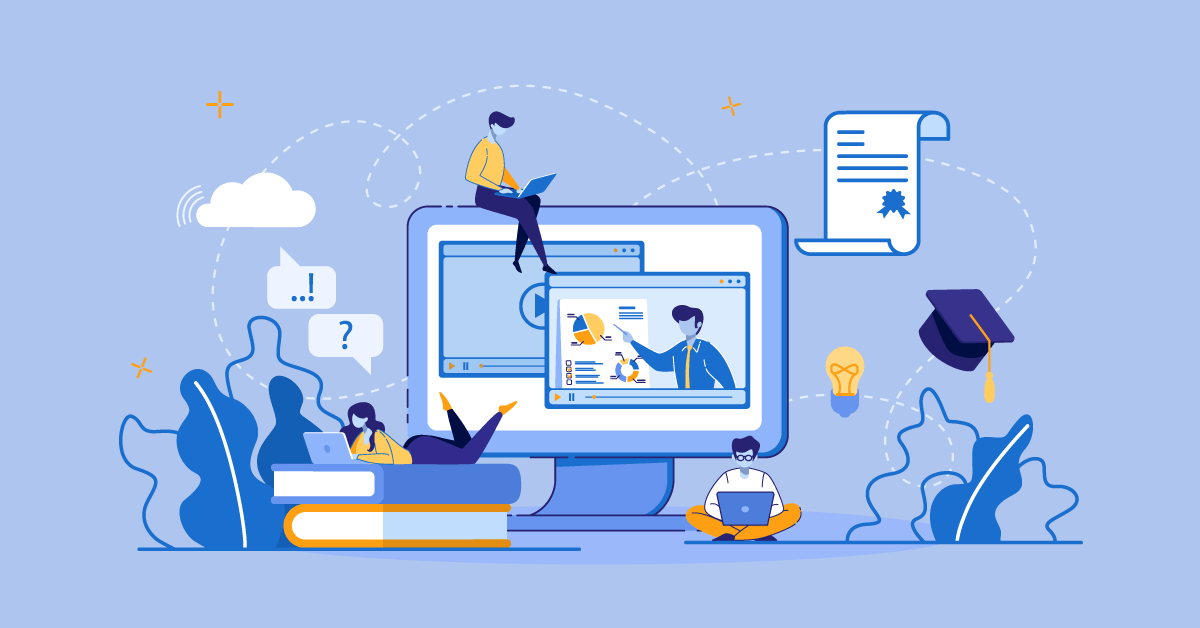In short, the features of an LMS are a deal-breaker.
You’ll also know, from even the most basic research, that not all learning management systems are made equal. The market’s packed with a variety of eLearning solutions, each one offering its own blend of LMS features and its own approach to user design.
There’s beauty in this choice. But also something of the beast.
Making the right decision means having a full and informed understanding of the different LMS features available across a range of different platforms. And then cross-referencing the features of an LMS against your organization’s unique needs.
To help navigate the procurement process, we’ve identified our 10 must-have LMS features. Use these to compile an LMS features checklist. Or, if you’re replacing an existing platform, to pinpoint gaps in your current provision. Either way, knowing what features are available can help you scale up and maximize the potential of your training program, wherever you are in the process.
The top 5 LMS features for training admins
Responsible for the ongoing management and delivery of your training platform, your LMS admins will have a different set of requirements from your end users. From your LMS features checklist, you should be able to tick off the following:
1. A versatile content course editor
A diverse and up-to-date mix of content is at the heart of any effective eLearning program. But authoring and managing a rich portfolio of course material can be resource-intensive.
A good course editor will give admins access to ready-made courses on a range of subjects. It will also provide the tools needed to reuse content, import material from the web, and create new material (from videos, audio files, and presentations to surveys, assessments, and quizzes). Plus, offer a files repository for centralizing and sharing content.
2. Enhanced evaluating and reporting features
To keep training effective means continually identifying areas for improvement.
Built-in reports are the key to helping admins deliver a better learning experience and nurture more engaged learners. Attendance records, course completion/pass rates, and individual/group progress reports provide a good level of insight.
But for next-level evaluation, pinpoint platforms that come with custom reporting tools, filtering functionality, and the ability to automate and schedule reports on a global scale.
3. Automation tools
Behind-the-scenes automations give admins back valuable time. Which means the more wide-ranging they are, the more capacity your admins will have to focus on fine-tuning over basic management.
From deadline reminders and notifications to certification expiry dates and actions triggered by the outcomes of reports, look for an LMS with an enhanced automation remit and features to match.
4. Customization options
Being able to control how learners view and access content is an important part of the LMS admin role. But it can be one of the most complex and time-consuming aspects of eLearning management. A training platform with comprehensive, ‘set-and-forget’ customization options simplifies the process. And relieves admins of the burden and the stress.
When testing out LMS platforms, it helps to break this category down into the following:
- Branding: With a white-label LMS, your admins can customize the look and feel of your portal to create a familiar setting for learners. For enterprise networks with multiple corporate identities, look for a platform that supports branding on a per-Branch basis.
- Learning paths: Give admins the ability to determine the order of courses based on a bespoke set of rules and requirements.
- User types: Setting up granular and detailed audience profiles means admins can apply customized roles and permissions. And form targeted and diverse training groups.
5. Integrations
Third-party integrations give enterprise companies the chance to sync up a potentially vast and disparate tech stack, and create a seamless user experience. There are hundreds of specialist third-party applications and services available to choose from. So, where should you focus your research?
Key integrations should cover the following categories and platforms:
- Human Resources: With an HR integration, admins can import employee data directly into an LMS, saving admins valuable set-up time. Creating a link between employee training and HR processes also allows admins to identify and act on user trends and patterns.
- Single Sign On: Integrating an LMS with your authentication provider makes signup and login processes simple and seamless. Security remains uncompromised, but learners don’t have to remember a series of different passwords. And admins don’t have to deal with relentless password reset queries.
- Video conferencing: Arguably the most engaging and effective approach to learning, a video conferencing software integration is a must for your LMS. Pinpoint platforms that also offer collaboration tools, real-time screen sharing, recording and editing functionality, live chats, gifs and stickers, interactivity, quick invite, and one-click activation.
- Application hub (Zapier): One integration with Zapier opens the door to over seven hundred of the most popular and far-reaching third-party applications and services. If apps like Slack, Zendesk, and MailChimp form part of your everyday portfolio, a Zapier integration with your LMS is a must-have feature.
- Content: Applications that support eLearning standards, such as SCORM and Tin Can (xAPI), combined with access to specialist content libraries, mean admins can produce rich, diverse, and creative courses at speed.

The top 5 LMS features for learners
All of the LMS features we’ve just highlighted will subtly benefit your end users as well as make life easier for your admins. But they’re unlikely to get learners talking.
The following additions are different. Bold, transformative, and an intrinsic part of the overall eLearning experience, an LMS with these features won’t slip by unnoticed.
1. Mobile functionality
Training needs to work for all of your learners, wherever they are. A mobile app gives all employees equal and flexible access to training in a format they’re familiar and comfortable with. Perfect for microlearning, mobile-optimized training hands control back to users who can choose when and where they complete it.
Tip: Want to know what courses translate well from desktop to mobile? Look for an LMS with a built-in compatibility check.
2. Communication tools
Social learning is one of the most effective training strategies because it turns passive recipients of information into active participants. Discussion forums, messaging functions, live chats, comments, and wikis engage learners by creating communities of interest, regardless of boundaries.
Tip: To make content more interactive and engaging for users, seek out an LMS that integrates discussion forums into individual units within courses.
3. Blended learning support
Combining online learning with real-time in-person training brings big benefits to users. It appeals to different learning types. It gives learners control over elements of their training. And it supports real-time interactivity and feedback, both of which grow engagement.
An LMS designed to support blended learning will include:
- the ability to schedule webinars
- automatic notifications highlighting upcoming blended learning activities
- easy-to-use course registration and management capabilities
- video-conferencing integrations that provide virtual whiteboards, file-sharing, real-time chat, and more
4. Gamification
Transforming learning into a competition with an element of fun creates a buzz around training initiatives. And grows engagement too. Which is why LMS gamification features are so important. Points, badges, avatars, rewards, levels, and leaderboards are all examples of LMS gamification features to look out for.
5. Enhanced accessibility
Want to build a truly inclusive training program that all your learners will love? Then you need to go beyond the generic WCAG-2 web accessibility guidelines.
Look for an LMS with built-in accessibility features too. Good examples to check for are: adding subtitles to videos, or integrating with web conferencing platforms so you can store and share recordings of live sessions.
Tip: Language and location can also challenge accessibility. If an LMS has a content localization feature and multilingual support, you can customize your learners’ experience according to location, language, culture, and time zones.
Time well spent
Of course, choosing an LMS isn’t just about the features.
Budget will be an issue for many. As well as factors like customer support, implementation timescales, and hosting requirements.
To combat this, use these practical dealbreakers to create an initial longlist and apply your LMS features checklist to narrow it down. Then… take your time.
More than just a financial investment, your choice of LMS will determine the perception of training across your organization. And that’s definitely something worth spending time on.

